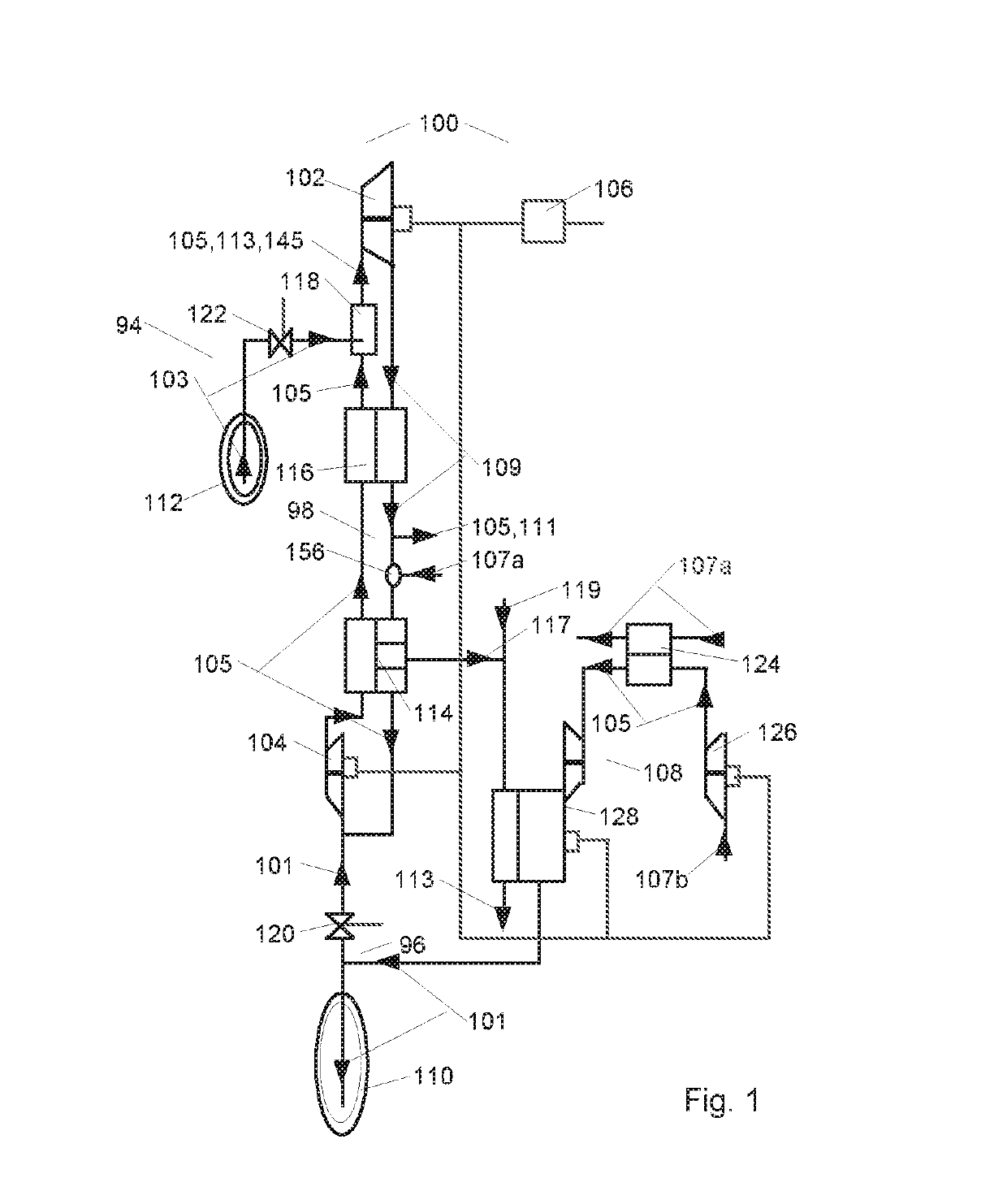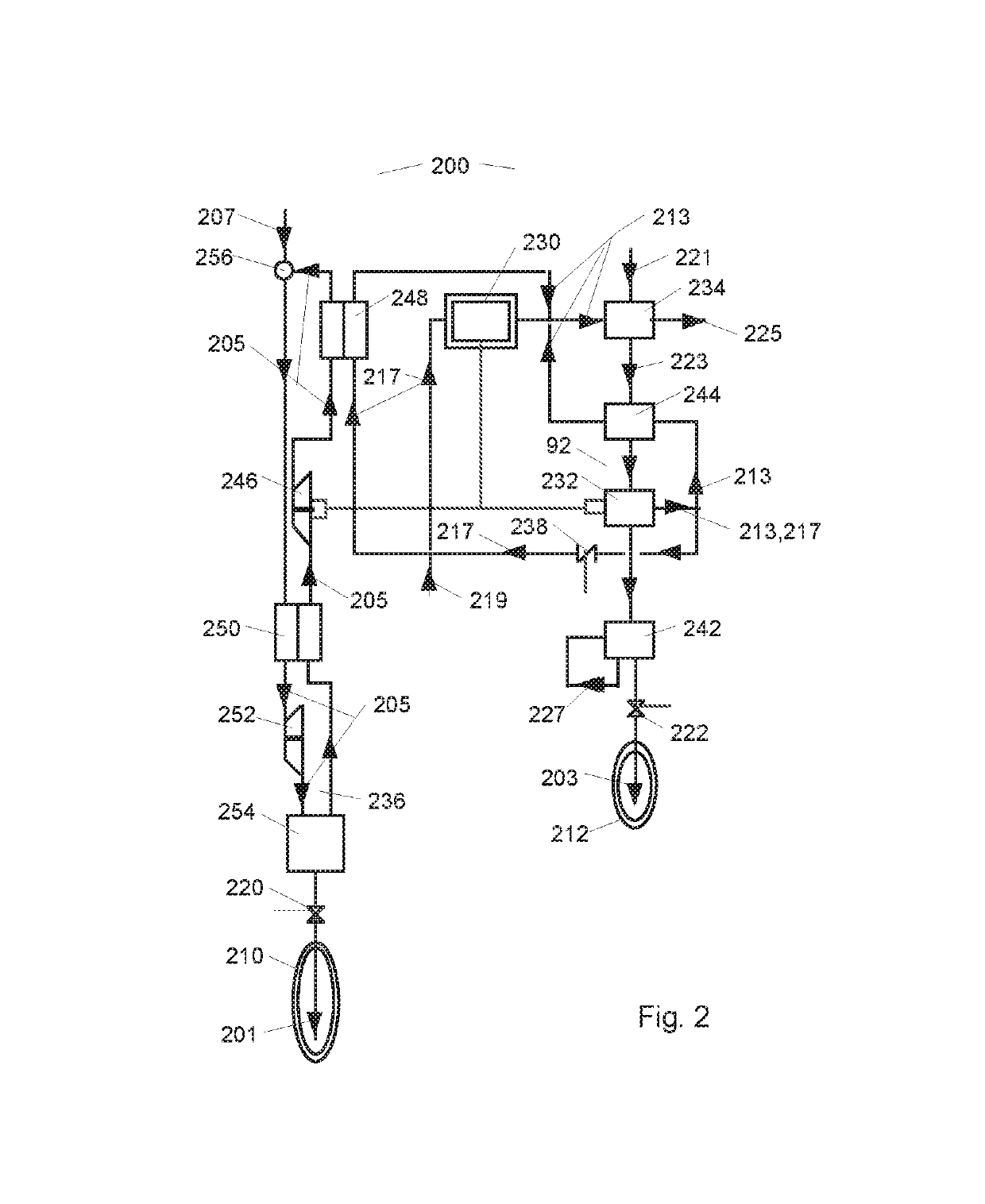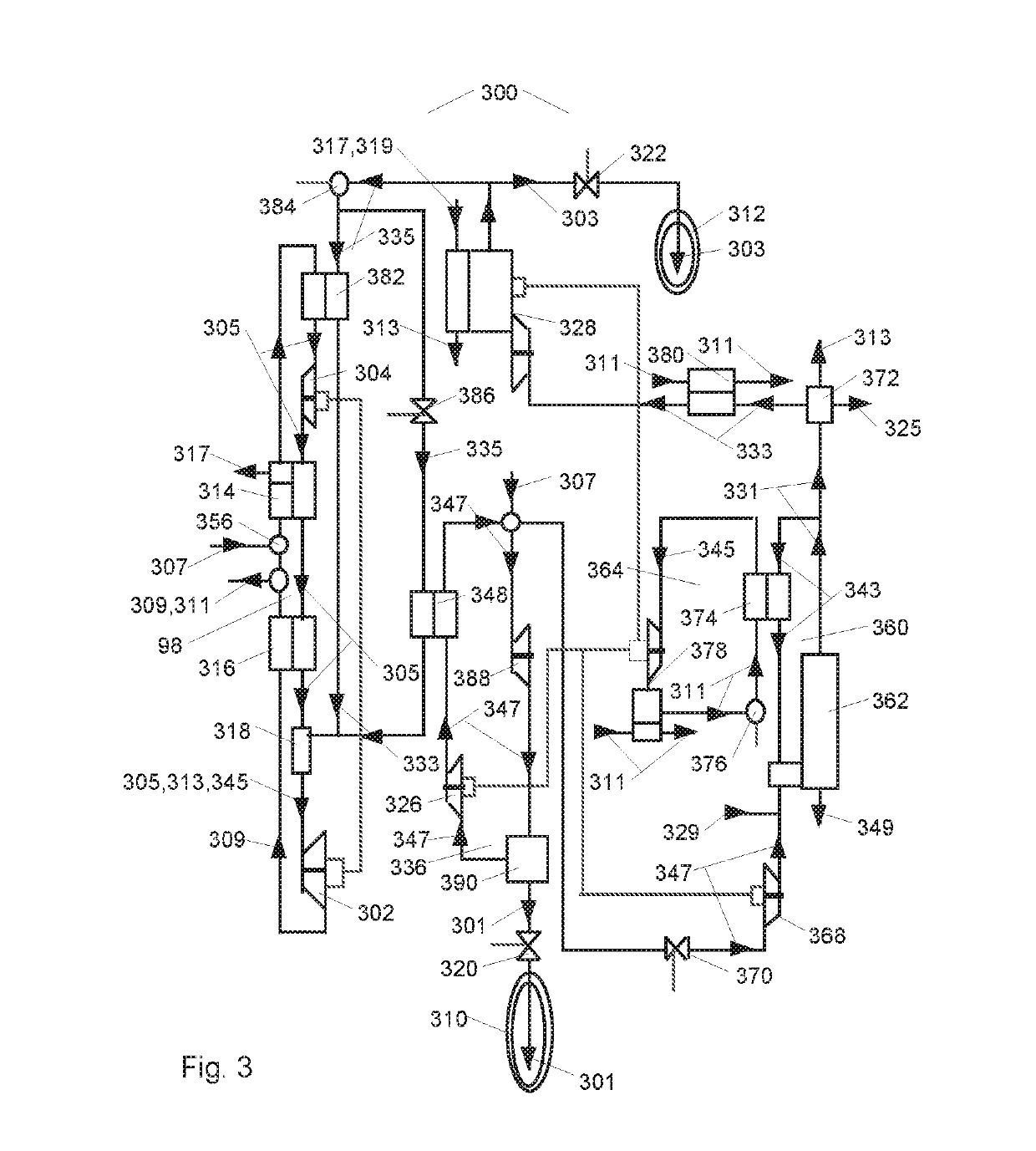Integral fuel and heat sink refrigerant synthesis for prime movers and liquefiers
a technology of prime movers and liquefiers, which is applied in the field of renewable energy storage systems, can solve the problems of high energy consumption, high cost, and high cost of other storage concepts under development, and achieve the effect of reducing fuel consumption and emissions, and reducing energy requirements
- Summary
- Abstract
- Description
- Claims
- Application Information
AI Technical Summary
Benefits of technology
Problems solved by technology
Method used
Image
Examples
Embodiment Construction
[0032]As a preface, it should be noted that all physical system components are referred to with an even reference number and all fluid compounds that move amongst the physical components are referred to with an odd reference number. Regardless of reference number, features with the same name are substantially the same features throughout the Figures. In addition, similar features that include reference numbers in some but not all Figures should be considered to be substantially similar features. Dashed lines illustrate electric connection between controllable generators, motors, compressors and valves. Finally, it is noted that when a specific model or distributor of a system component is included, this inclusion is merely exemplary and comparable components may be substituted.
[0033]Referring first to FIG. 1, a schematic illustrating a preferred embodiment of a motor vehicle propulsion system 100 of the present invention is provided. Although the preferred use of system 100 is to pr...
PUM
 Login to View More
Login to View More Abstract
Description
Claims
Application Information
 Login to View More
Login to View More - R&D
- Intellectual Property
- Life Sciences
- Materials
- Tech Scout
- Unparalleled Data Quality
- Higher Quality Content
- 60% Fewer Hallucinations
Browse by: Latest US Patents, China's latest patents, Technical Efficacy Thesaurus, Application Domain, Technology Topic, Popular Technical Reports.
© 2025 PatSnap. All rights reserved.Legal|Privacy policy|Modern Slavery Act Transparency Statement|Sitemap|About US| Contact US: help@patsnap.com



